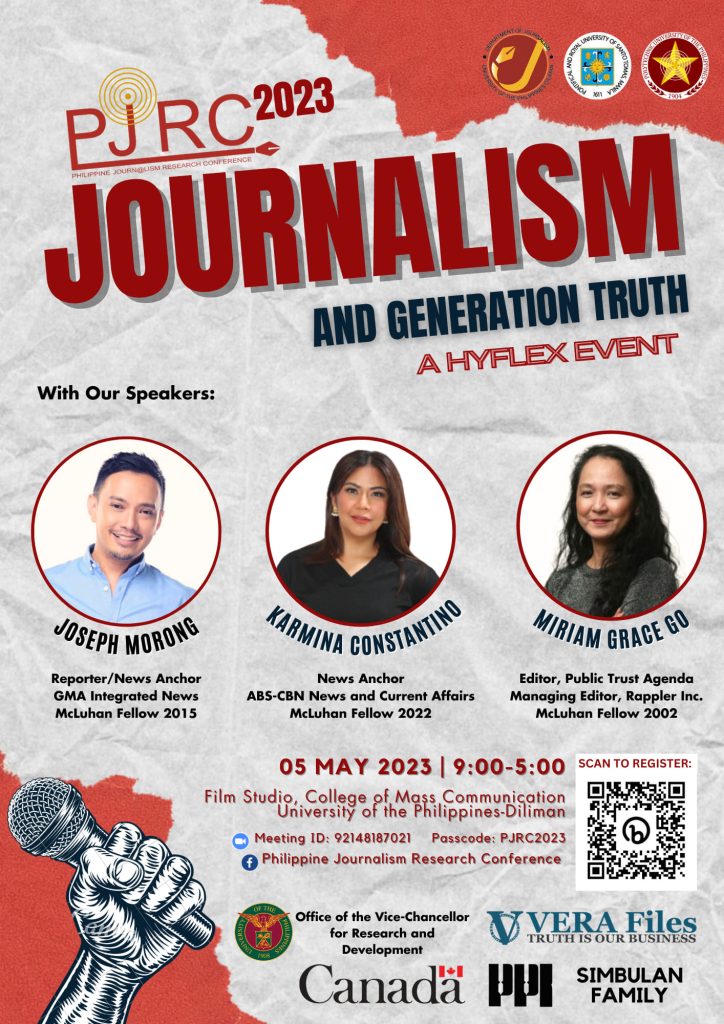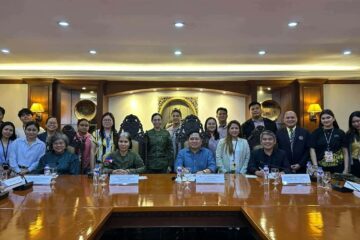
STAYING COMMITTED to performing journalistic duties, such as seeking the truth, would help student journalists in adapting to the challenges brought by the new media, veteran journalists said.
GMA Integrated News reporter Joseph Morong urged aspiring journalists to uphold journalistic principles and values to protect themselves amid the rising disinformation-related attacks and other challenges within the digital space.
“In this age (of social media), all the more you should know your core as journalists because that will protect you in your job given the new changes in the landscape,” he said during the Philippine Journalism Research Conference (PJRC) 2023 on Friday, May 5.
Morong said it is important to adapt to social media spaces, which he described as the new “battleground” for journalists.
“Journalism needs to be younger and I’m not just talking about the people on air, [rather] the form and the presentation without losing its age-old mission of truth-telling and service to the public. Social media is formed, journalism is substance,” he said.
ABS-CBN News anchor Karmina Constantino also encouraged journalists to combat disinformation whenever the opportunity presents itself.
“When there’s an opportunity to make things right, you take it. We are at war with disinformation and to put a stop to every attempt at deceiving the public is the game, and our goal at the very least is to present the public with the possibility of ownership over each decision they make,” Constantino said.
Meanwhile, Miriam Grace Go, Public Trust Media and Rappler editor, said journalists should realize their responsibility in combatting the spread of disinformation, media distrust and lack of depth in the news.
“Being responsible news producers, of course, everything starts with reliable reporting. […] Being a responsible news producer would entail consciously fighting disinformation. […] Being a responsible news producer also means bringing attention to the issues that matter to the communities,” she said.
Go said that the “cultural power” of young journalists can be used to their advantage in shaping media.
“[A]s a younger generation, now you have what is called cultural power. You shape what society deems as important. Your culture defines what people pay attention to,” she said.
She also noted that student journalists have the courage to “seek truths behind illusions” apart from adults who become “jaded” sometimes.
“But you, black and white [thinking] is still clear to you. Of course, along the way you will learn that sometimes gray areas are necessary but as long as black and white are clear to you that is a power that you can actually will,” she said.
Journalism at the hands of young journalists
More than 100 journalism research and reporting works from various universities nationwide were presented in this year’s PJRC. One entry per category was also awarded under the Chit Estella Journalism Student Awards.
UST journalism seniors Wendell Adrian Quijado and Aira Nerize Bernardo secured the Best News Documentary award for their entry, “Dalawang Daan,” which centered around a college student who had to live through a daily allowance of 200 pesos.
The Chit Estella Journalism Award had 52 finalists in total under three main categories: journalism research (community research and general academic research), special projects (documentary feature and news documentary), and photo essay.
Go lauded the students for their entries in the PJRC 2023, saying their choices of issues to cover and the way they presented them were commendable. She added that those works proved that there’s more in store for future journalism.
“When I see the outputs, this many and this good, I look for what other teachers and industry colleagues say that there are fewer students who are interested in going into news media practice these days […] You give me hope that what they say about the future of journalism is not so true,” she said.
This year’s PJRC, which is centered around the theme “Journalism and Generation Truth,” was organized by the University of the Philippines Department of Journalism with the University of Santo Tomas and the Polytechnic University of the Philippines. F – Katherine Chan and Trisha Tamio



